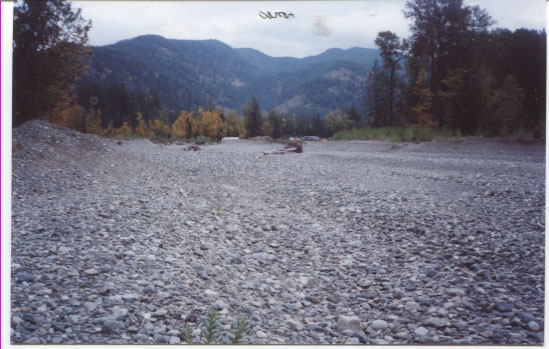HOT, DRY SUMMERS HARD ON FISH
By
Ted Burns
There is nothing unusual about dry summers on the South Coast and particularly on Southern Vancouver Island but his year has been extreme so far. The prolonged spell of hot, dry weather is taking a large toll of young trout and salmon.
The drying began in late winter – a winter with very little mountain snow. February and March precipitation was far below normal. There was bit of a recovery in April but May and June were very dry. By early June, it was hot. The temperature climbed above 30 degrees on June 4 and there have been many days since then where temperatures soared into the upper thirties baking the creeks and warming Cowichan Lake and river to record levels. There was even a July night where the temperature only fell to 27 degrees
The lower ends of many Cowichan Lake tributaries dry in most summers but drying began much earlier this year, and if the drought holds, drying will be much more extensive. The Cowichan Lake Salmonid Enhancement Society and Cowichan Tribes salvage young trout and salmon from drying streams but they have been hard pressed to keep up this year and the CLSES fry salvage budget ran out the last week in July.
Temperatures in the lake and river have been much higher than normal. When they exceed about 21 degrees, which they began to do in mid – June, young fish seek out cooler water. Young trout and salmon (a large percentage of coho fry born in lake tributaries migrate down to the lake to complete the freshwater phase of their life) are forced to move out of the shore zone of the lake where they are better off because rearing conditions are the most favourable and spend the summer in deeper water. In summers like this one, cool water in Cowichan Lake is deeper than 20 metres (60 feet plus). Living conditions are not the best in the lake depths. There is no food and no place to escape when predators like big trout arrive. Cowichan Lake surface temperature has ranged around 23 – 27 degrees since July. In summers like this, the lake usually doesn’t cool enough for the fish to move back into the shallows until mid – October. CLSES has been trapping coho smolts near the outlet of Cowichan Lake for several years. In summers when the young coho can stay near shore, smolt numbers the following spring approach 300,000. After summers when the fish have to tough it out offshore, fry to smolt survival is far less.
In the Cowichan River, coho fry vacate large areas when the water warms. No one is sure where they go but they can be found where there are up welling springs of cool water or where groundwater fed side channels enter. There are not many of these places.
What can be done to moderate the effects of these increasing common California summers (and winters)? We need to be much more proactive about storing winter runoff in wetland basins for summer release. There are a large number of headwater wetlands on Cowichan Lake tributaries where low weirs could retain winter water that could slowly be released in the summer months. This would provide year round flow in many creeks that now dry early. A deep water discharge of cool water from the depths of Cowichan Lake could possibly provide enough cool water to the river so that young salmonids could stay in their home territories instead of concentrating in cool water refuges where competition lessens their survival. Measures like these are very difficult to accomplish because of competing interests and bureaucratic resistance. In the meantime, pray for rain this summer and hope for cold rainy winters with lots of mountain snow but don’t count on it.

This part of the Robertson River was dry by May this year – 1998.
Tags: Mid-night in Manilla